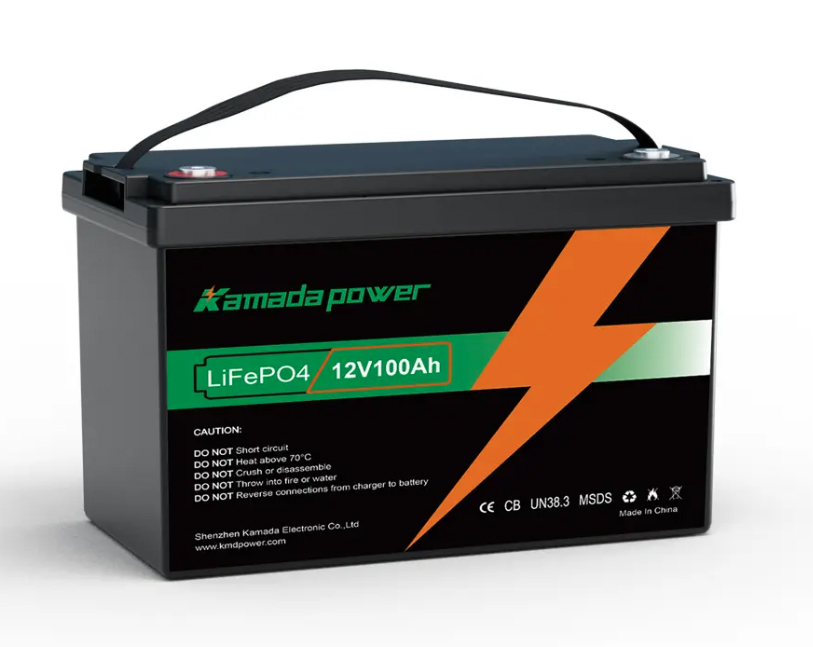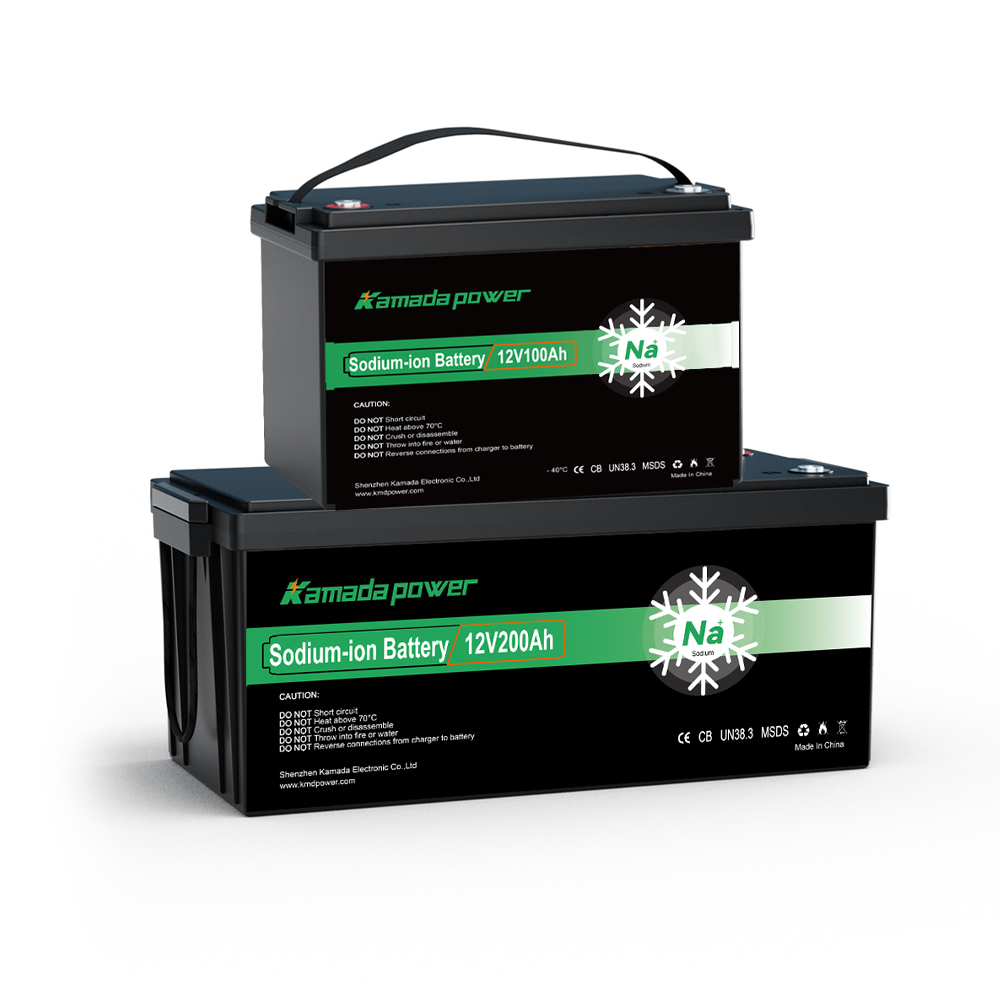It’s 3 PM on a Tuesday. A forklift dies in the main aisle, just as you’re rushing to get a big shipment out. The operator has to abandon it, find another machine, and sort out the mess. You’ve just lost 30 minutes you can’t get back.
Sound familiar? That moment of downtime just cost you real money. When you add it up, those small battery failures become a serious drain on your business.
An industrial battery isn’t just a component; it’s the heart of your operation. The wrong choice creates hidden costs and kills your uptime. In my two decades as a battery specialist, I’ve seen countless companies make expensive mistakes by focusing on the wrong things. This guide gives you a framework for choosing a battery that actually makes you money, instead of causing problems.

12v 100ah lifepo4 battery

12v 100ah sodium ion battery
Why Your Industrial Battery Choice is a Critical Business Decision, Not Just a Purchase
It’s easy to see a battery as just another line item on a budget. That view misses the big picture. The battery you choose directly impacts how much work you get done every day.
Think about uptime. A lead-acid battery might need an 8-hour charge plus another 8-hour cool-down. That’s 16 hours where that battery is useless. For a three-shift operation, that means you need three batteries for every truck. A lithium-ion battery, on the other hand, can be fully charged in about an hour. You can also opportunity-charge it during breaks, which often means one battery per vehicle is all you need. That’s a huge difference in equipment availability.
Then there are the hidden costs of going “cheap.” The upfront price is just the tip of the iceberg. We have to talk about Total Cost of Ownership (TCO). This includes things like:
- Labor Costs: Paying people to constantly water, clean, and equalize lead-acid batteries.
- Energy Bills: A lithium-ion battery is over 95% efficient. A lead-acid battery wastes up to 20% of the power you pay for as heat. That waste adds up on your utility bills.
- Replacements: A lead-acid battery gives you about 1,500 cycles. A quality Li-ion pack will give you over 3,500. You’ll buy two or three lead-acid batteries in the lifespan of a single Li-ion.
ROI is what matters. The right battery is an investment that pays for itself. The gains in productivity and savings on expenses make a powerful case that goes way beyond the initial price.
The Core Contenders: A Head-to-Head Technical Breakdown for Decision-Makers
Let’s get under the hood of the main technologies you’ll be looking at.
Traditional Powerhouse: Flooded Lead-Acid Batteries This is the old-school tech that’s powered equipment for decades. It’s the choice for single-shift, low-use operations where the initial budget is the only concern. While the low upfront cost looks good, it comes with a lot of operational baggage—daily watering, special charging rooms, and the risk of acid spills.
The Modern Workhorse: Lithium-Ion (Li-ion) Batteries For demanding, multi-shift places like distribution centers, Li-ion’s the clear choice. Chemistries like Lithium Iron Phosphate (LiFePO4) are built for intense use. With zero maintenance, fast charging, and a sealed design, you get rid of the safety hazards and labor costs of lead-acid. The higher initial investment is almost always paid back by a much lower TCO.
Other Technologies to Note The battery world is always changing. You might see Thin Plate Pure Lead (TPPL) batteries, which are a step up from old lead-acid with faster charging and no watering. They still don’t match the cycle life or efficiency of Li-ion, though.
An emerging player we’re watching is the sodium-ion battery pack. For some uses, like an Energy Storage System (ESS) or equipment in extreme cold, it shows real promise. Its performance in freezing temps can be better than LiFePO4, and it doesn’t need cobalt or lithium. For now, its energy density is lower, so it’s bulkier for the same amount of power, making it less ideal for compact equipment.
| Feature | Flooded Lead-Acid | Lithium-Ion (Li-ion) |
|---|
| Uptime/Availability | Low-Medium (8h charge + 8h cool) | High (1-2h charge, opportunity charging) |
| Maintenance | High (Daily watering, cleaning) | Virtually None |
| Lifespan (Cycles) | ~1,500 | ~3,500+ |
| Energy Efficiency | ~80-85% | >95% |
| Safety | Moderate Risk (Gassing, spills) | High (Sealed, BMS protection) |
| Upfront Cost | Low | High |
| Total Cost of Ownership | High | Low |
The 5-Step Framework for Choosing the Right Industrial Battery
Ready to make a smart decision? Follow these five steps.
Step 1: Know Your Operation Cold First, be brutally honest about how you run. How many shifts? How many hours a day do your busiest trucks run? Are you in a cold storage facility? This data is the foundation of your decision.
Step 2: Calculate the True Total Cost of Ownership (TCO) Go beyond the sticker price. Just add up the Initial Cost + Energy Costs + Labor Costs (for maintenance & swapping) + Replacement Costs, and then subtract your Productivity Gains. Here’s a pro tip: Don’t forget to value your real estate. That big battery room for your lead-acid fleet can become valuable operational space once you switch.
Step 3: Evaluate the Impact on Uptime and Performance Think about what opportunity charging really means. It means a vehicle can get a huge power boost during a 30-minute break, which can eliminate battery swaps completely. Also, think about power consistency. A lead-acid battery gets weaker as it discharges, meaning slower lift speeds. A Li-ion battery gives you full power right until it’s empty. Your equipment performs at its peak all day.
Step 4: Think About Your People and the Planet A safer workplace is a more productive one. Getting rid of acid spills, fumes, and swapping 2,000-pound batteries is a huge win for your team’s morale. Plus, it’s also easier to hit your company’s sustainability goals when your batteries are more efficient and last twice as long.
Step 5: Plan for Integration and the Future Modern batteries are smart. A good Battery Management System (BMS) is the brain, protecting the battery and giving you useful data. When you connect it to your fleet telematics, you can track battery health and optimize how you use your equipment. This is how you get ready for a more automated future.
Common Pitfalls to Avoid When Buying Industrial Batteries
I’ve seen these mistakes cost companies a fortune. Try to avoid them:
- The “Sticker Price” Trap: The biggest mistake. It ignores all the costs that come later.
- One-Size-Fits-All Thinking: A pallet jack that’s used twice a day has different needs than a turret truck running 20 hours a day.
- Ignoring Infrastructure: Forgetting that lead-acid needs special rooms, watering stations, and swapping gear.
- Underestimating Maintenance: That “soft cost” of paying someone to be a “battery janitor” is a hard hit to your budget.
Conclusion
The bottom line is this: choosing the right battery isn’t a purchase. It’s a strategic investment in your uptime and profitability. You have to shift the conversation from “how much does it cost now” to “how much value will it create.” When you focus on uptime, TCO, and efficiency, the right choice becomes obvious.
Ready to see what the real numbers look like for your operation? Contact us. We’ll set you up with a free Uptime & TCO Assessment with one of our battery experts.
FAQ
How do I actually calculate the ROI for a lithium-ion battery?
It’s simpler than you think. Add up what you save each year on things like lower energy bills, no maintenance labor, and fewer replacements. Add in the value of getting more work done. Then, just divide the higher initial cost of the Li-ion battery by those total annual savings. That’s your payback period. It’s often surprisingly short, usually 2-4 years.
Are lithium-ion batteries really safe for tough industrial environments?
Yes, absolutely. Industrial-grade Li-ion, especially LiFePO4 chemistry, is extremely safe. They’re fully sealed and have an advanced Battery Management System (BMS) that monitors everything—temp, voltage, current—to stop problems before they start. In many ways, they’re much safer than lead-acid.
What if I have an older fleet? Can I retrofit my existing forklifts with lithium-ion batteries?
Yes, in most cases, you can. Top manufacturers make “drop-in” replacement batteries designed to fit the exact size and weight specs of your current equipment. The key is to work with a good supplier who can make sure it integrates smoothly with your vehicle’s electronics and give you the right charger.